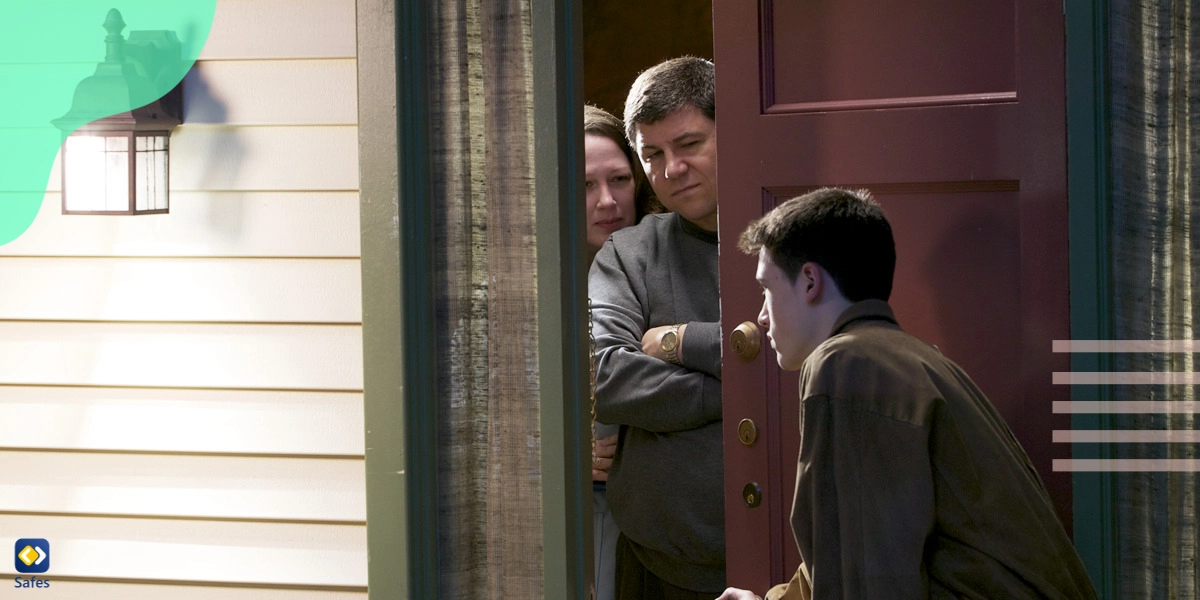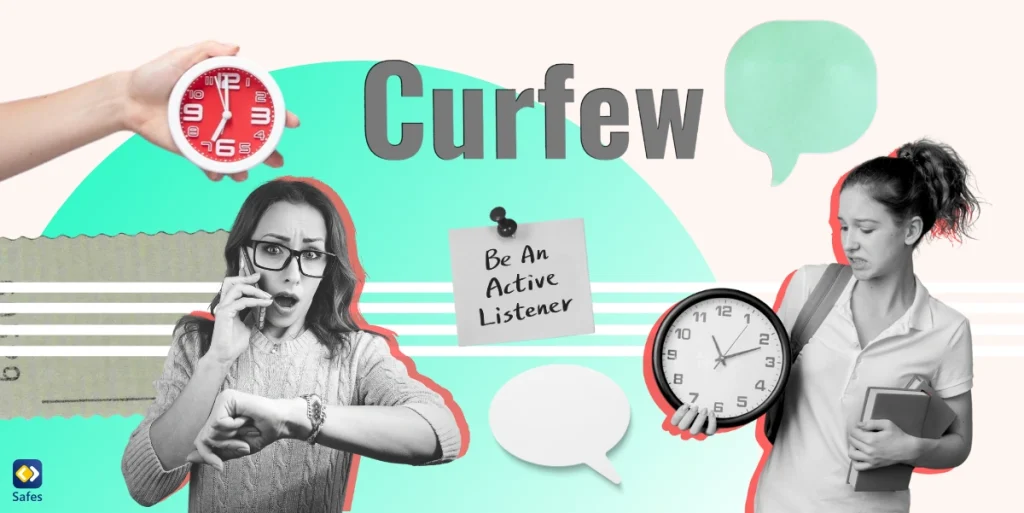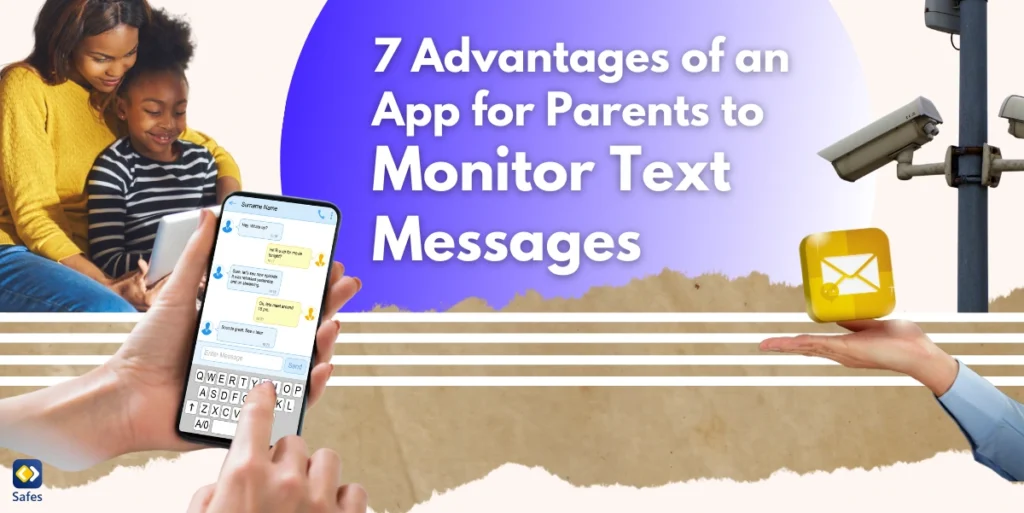Adolescence is a pivotal time marked by a quest for independence, a yearning for autonomy, and a desire to push boundaries, often leading to the familiar scenario of breaking curfew. Striking a balance between ensuring your child’s safety and allowing them to explore their independence can be challenging.
Download and Start Your Free Trial of the Safes Parental Control App
The concept of curfew is not new and is often seen as a practical tool to protect adolescents from the potential dangers of staying out late. However, implementing and enforcing curfews can often lead to a power struggle between you and your child.
Nowadays, curfews extend beyond the physical world, including screen time and internet use. In this article, we’ll explore why children break curfew, the potential dangers of staying out late, and how to establish a curfew that protects your child and nurtures their autonomy. We also introduce Safes, a parental control app that can support you in managing your child’s digital exposure.
Understanding the Motivations Behind Breaking Curfew
Breaking curfew is often seen as an act of rebellion, a defiance of authority. However, the underlying motivations can be more complex. The adolescent stage is characterized by a strong desire for social connection and autonomy, often leading to the exploration of boundaries set by parents.
Breaking curfew can be a teenager’s way of asserting control over their life, testing their decision-making skills, and exploring their individuality. Their perception of time differs from that of adults, where a month-long grounding can seem like an eternity.
Understanding these motivations is crucial in addressing the issue of breaking curfew. It is equally important to consider the potential risks that your child might face when staying out late, which brings us to the next section.
The Dangers of Staying Out Late
One of the primary reasons for establishing a curfew is the potential dangers of staying out late. These risks include exposure to illegal activities, such as substance abuse, and heightened vulnerability to criminal activities.
Moreover, late-night outings can also lead to sleep deprivation, harming a teenager’s physical health, emotional well-being, and academic performance.
However, not all adolescents who stay out late participate in risky behaviors. Therefore, open communication and trust-building are vital in ensuring your child’s safety during their outings.

Establishing a Curfew: A Balance of Safety and Autonomy
Establishing a curfew should not be a unilateral decision imposed by parents. Instead, it should involve a thoughtful negotiation process that takes into account your child’s viewpoint, building a sense of responsibility and respect for the rules set.
Here are some strategies to establish an effective curfew:
Open Dialogue
Initiate a conversation about curfew, explaining the reasons for its establishment. This communication ensures that your child understands the context of the rules set, gaining their compliance.
Negotiation
Involve your child in setting the curfew time. This involvement gives them a sense of control and ownership of the rules, making them more likely to adhere to them.
Consistency
Enforce the curfew consistently. Inconsistent enforcement sends mixed messages and undermines the effectiveness of the curfew.
Flexibility
While consistency is important, flexibility is equally crucial. Allow for changes in curfew times under special circumstances, with the understanding that this is an exception rather than the norm.
Consequences
Establish clear consequences for breaking curfew. The punishment for breaking curfew should be proportionate and fair, serving as a deterrent rather than a harsh penalty.
The Role of Safes in Managing Digital Curfew
Today, curfews extend to the online world. Excessive screen time and late-night internet use can harm your child’s mental health, sleep patterns, and overall well-being. But Safes parental control app can help you by managing your child’s online activities. With Safes, you can set a digital curfew, limiting your child’s screen time and ensuring they disconnect from the digital world at a suitable time.
Safes also allows you to monitor your child’s online activities, providing you with insight into their digital habits. This insight can guide conversations about appropriate online behavior, internet safety, and digital responsibility.
You can download Safes from our website or major app distribution platforms such as App Store and Google Play. We offer both free and paid plans, but for the complete protection of your child, we suggest the paid plan. You can sign up today for a free trial and explore it’s features today.
Would you like to learn how to put parental controls on different operating systems? Use the resources down below:
- Windows parental controls
- Macbook parental controls
- Parental controls on Android
- iPhone parental controls
Breaking Curfew: Conclusion
Breaking curfew is often a manifestation of a teenager’s journey towards autonomy and independence. Understanding this perspective and establishing a curfew that respects your child’s developmental needs can transform conflict into conversation and connection.
Curfews, whether physical or digital, are tools to ensure your child’s safety and well-being. They should not be used to exert control or restrict your child’s freedom unnecessarily.
With open dialogue, negotiation, consistency, flexibility, and the aid of tools like the Safes app, you can establish a curfew that works for your child, nurturing their autonomy while keeping them safe.
Your Child’s Online Safety Starts Here
Every parent today needs a solution to manage screen time and keep their child safe online.
Without the right tools, digital risks and excessive screen time can impact children's well-being. Safes helps parents set healthy boundaries, monitor activity, and protect kids from online dangers—all with an easy-to-use app.
Take control of your child’s digital world. Learn more about Safes or download the app to start your free trial today!




